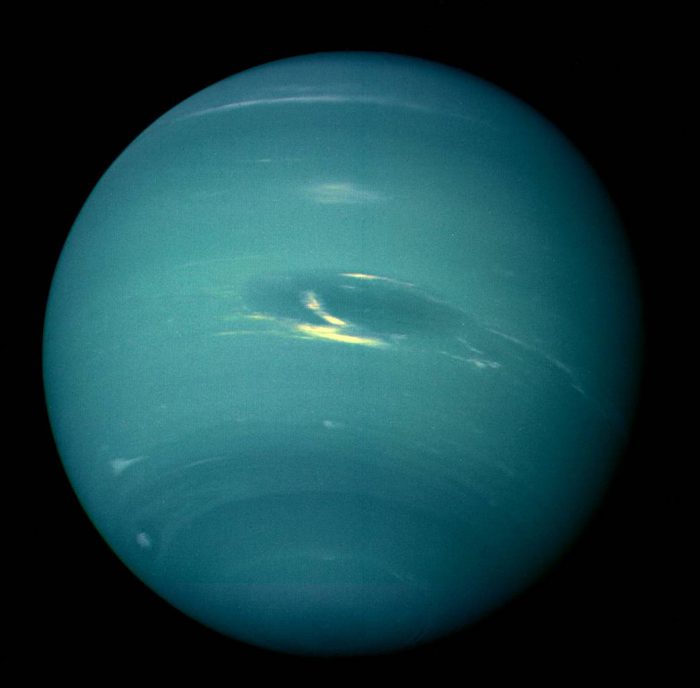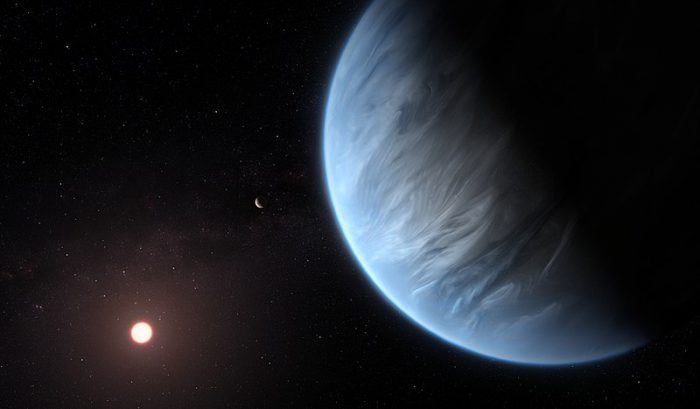In the world of modern astronomy, nothing is as thrilling as the hunt for habitable alien worlds.
Everyone wants to be the first to find a planet that sits in the Goldilocks zone (a.k.a. the not too hot/not too cold/just right distance from a star) and can support life. And sure enough, there have been a few proposed candidates over the last few years.
But while many of the proposed exoplanets (planets outside of our solar system) have displayed the ideal temperature and general conditions to possibly support life, none of them have proven to have that one most crucial element: Water.
Until now.
Meet K2-18b
Okay, this is NOT a picture of the surface of K2-18b. But could something like this exist this? (Getty Embed)
It's called K2-18b. Though, if what scientists are saying is true, it may get a name upgrade very soon. It is the first potentially habitable alien water planet. How do they know for sure?
Based on the spectrum of light waves reflected off of other planets and back to us, current space telescopes are able to read the chemical composition of that world. If that sounds mind-blowing, well, it is! But every element and compound carries its own light signature. And in the atmosphere of K2-18b, H2O is a-popping big time!
Combine that with the estimated temperature of the world—likely somewhere between 40°C and 0°C—and you've got a perfect candidate for liquid water. And yes ... LIFE.
Too far to visit? Too big for life?

Some scientists feel that K2-18b might be more like Neptune and suitable for life. (NASA)
But there's a huge difference between a candidate and 100% confirmed life-making Earth twin. And sadly, getting that confirmation is a bit beyond our grasp right now.
This water planet is about 111 light years away from us—that's around 650 million million miles. We're simply not visiting this planet, well, maybe ever. Even the latest and greatest theory in probe technology, the Lightsail, would take around 600 years to make such a journey.
And there are other issues, too. This planet is twice the size and over eight times the mass of Earth. Many scientists believe that such a planet would have immense gravity and it's not likely to have a rocky surface at all. And there's also no way to confirm whether or not it has something like our ozone layer, the vital shield that protects all life on Earth from deadly solar radiation. Given that K2-18b orbits very close to its red dwarf star, this would be very important to have.
In short, just because there's water and a decent temperature, life is anything but a slam dunk here.
Future hopes
So what do we make of K2-18b, then? Is it the answer to our dreams? Or just one of billions upon billions of worlds out there that can't quite match Earth's magic recipe?
We may yet find out. Scientists believe that within the next ten years, space telescopes should improve to the point where they can read even finer details about a planet's atmosphere. And this includes being able to detect the gases that living things are known to inject into the atmosphere. (For a look into how living things can change an atmosphere big time, read this!)
All of this means that even if we can't visit K2-18b, we could get an answer about whether life is there after all. And soon, too! Until then, check out this artist's animation of this water planet.
 An artist's impression of K2-18b in orbit around its red dwarf star. (ESA/Hubble M. Kornmesser)
An artist's impression of K2-18b in orbit around its red dwarf star. (ESA/Hubble M. Kornmesser)









